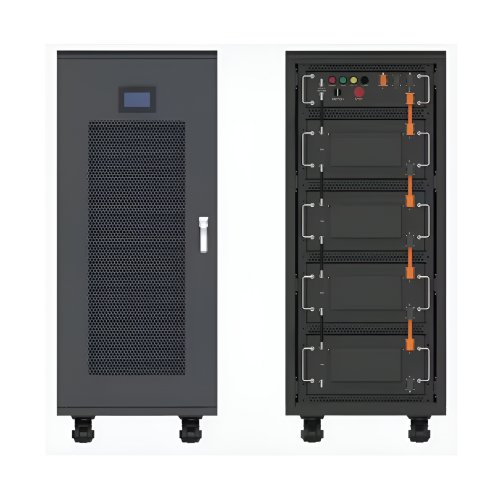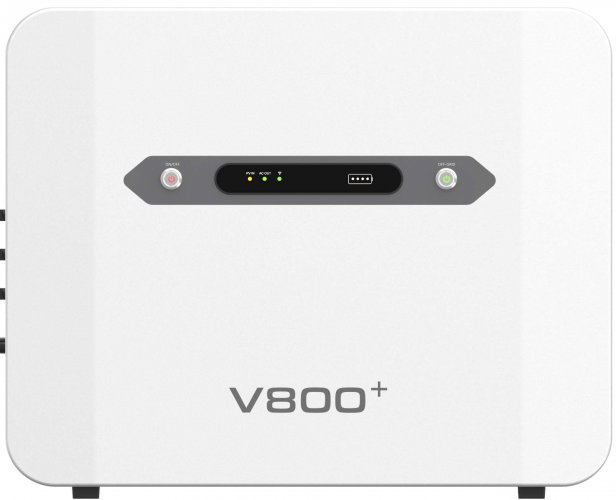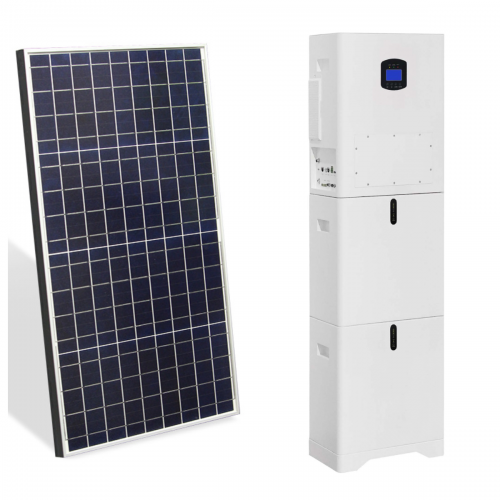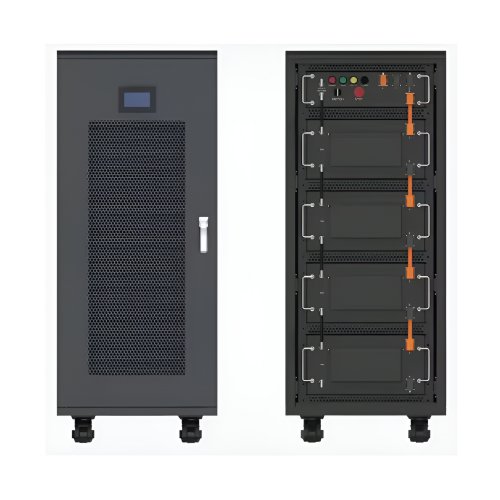Advances In Energy Density: Pioneering High-capacity Storage Systems For A Sustainable Future
The relentless pursuit of higher energy density—the amount of energy stored in a given system or region of space per unit volume or mass—stands as a central pillar of modern materials science and engineering. It is the critical metric dictating the performance, range, and miniaturization potential of technologies that define our era, from portable electronics to electric vehicles (EVs) and grid-scale energy storage. Recent years have witnessed a surge of groundbreaking innovations across battery chemistries, supercapacitors, and even fuel cells, pushing the boundaries of what is physically and chemically possible. This article explores the latest research breakthroughs, the technological advancements they have spurred, and the future trajectory of high-energy-density systems.
Lithium-Ion Batteries: Pushing the Anode Frontier
The dominance of lithium-ion batteries (LIBs) continues, but their evolution is accelerating beyond the incremental improvements of the past. While nickel-rich layered oxides (NMC 811, NCA) and lithium-rich cathodes have pushed cathode capacities, the most transformative recent progress has occurred at the anode. The long-awaited commercialization of silicon (Si)-dominant anodes marks a watershed moment. Silicon offers a theoretical capacity nearly ten times that of conventional graphite (3579 mAh/g vs. 372 mAh/g). However, its massive volume expansion (~300%) during lithiation has historically caused rapid mechanical degradation and failure.
Recent research has overcome this through sophisticated nanostructuring and composite design. For instance, the development of porous Si nanoparticles, encapsulated within conductive carbon matrices and elastic binders, effectively accommodates strain and maintains electrical contact. Companies like Sila Nanotechnologies are now producing anode materials that replace 20-80% of graphite with silicon, achieving 20-40% increases in cell-level energy density. Furthermore, pre-lithiation techniques are being refined to compensate for the large first-cycle irreversible capacity loss, a significant hurdle for full-Si anodes. These advances are directly translating into EVs with longer ranges and electronics with extended battery life.
The Solid-State Revolution: Enhancing Safety and Performance
Perhaps the most anticipated paradigm shift is the move towards all-solid-state batteries (ASSBs). By replacing the flammable liquid electrolyte with a solid ion conductor, ASSBs promise not only a dramatic improvement in safety by eliminating fire risk but also a fundamental leap in energy density. This is achieved through the potential use of a lithium metal anode, the "holy grail" of battery anodes due to its ultra-high theoretical capacity (3860 mAh/g) and lowest electrochemical potential.
The critical challenge has been identifying a solid electrolyte material that combines high ionic conductivity (rivaling liquids), excellent stability against the lithium metal electrode, and mechanical robustness. Recent breakthroughs have emerged on multiple fronts:Sulfide-based electrolytes (e.g., Li₆PS₅Cl, Li₁₀GeP₂S₁₂) offer exceptional ionic conductivity (>10 mS/cm at room temperature). Research by Kanno et al. has led to new thiophosphate compositions with enhanced stability.Oxide-based electrolytes (e.g., Li₇La₃Zr₂O₁₂ - LLZO) provide superior stability but have historically suffered from high interfacial resistance. Innovations in thin-film processing and interface engineering, such as the introduction of ultrathin interfacial layers, are mitigating this issue.Halide-based solid electrolytes are a newer class of materials showing promising combinations of conductivity and oxidative stability, making them particularly suitable for use with high-voltage cathodes.
Companies like QuantumScape have reported prototype cells with a lithium-metal anode and a proprietary ceramic separator, demonstrating high energy density (~1000 Wh/L), rapid charging capabilities, and long cycle life. While manufacturing scalability remains a hurdle, the progress is undeniable, positioning ASSBs as the likely successor to conventional LIBs within the decade.
Beyond Lithium: Multivalent and Lithium-Sulfur chemistries
For applications demanding even greater energy density, research extends beyond the lithium-ion paradigm. Multivalent batteries, utilizing ions like magnesium (Mg²⁺) or zinc (Zn²⁺), offer the potential for higher volumetric energy densities as each ion can transfer two electrons. However, the development of efficient electrolytes and cathodes that enable reversible plating/stripping has been slow. Recent work on new classes of non-nucleophilic electrolytes and intercalation hosts like Chevrel phase (Mo₆S₈) for Mg-ion batteries is revitalizing the field.
Concurrently, lithium-sulfur (Li-S) batteries, with a theoretical energy density of ~2600 Wh/kg, continue to see progress. The primary challenges are the dissolution of intermediate lithium polysulfides (shuttle effect) and the insulating nature of sulfur. Latest strategies involve designing advanced sulfur hosts, such as highly ordered mesoporous carbon and various metal-organic frameworks (MOFs), to confine the active material and catalyze the conversion reaction. The use of new functional separators and interlayers to trap polysulfides has also significantly improved cycle life, bringing Li-S technology closer to practical application for aviation and specialized transport.
Future Outlook and Challenges
The future of energy density is a multi-faceted landscape. Near-term gains will be realized through the widespread adoption of silicon-composite anodes and the progressive de-lithiation of cathodes. The mid-term will likely be defined by the commercial rollout of solid-state batteries, initially in premium applications. In the longer term, Li-S and eventually lithium-air (Li-O₂) systems, though still highly exploratory, represent the ultimate frontier for electrochemical storage.
However, the path forward is not solely a technical one. Increasing energy density must be balanced with critical considerations of cost, resource availability (e.g., cobalt, nickel, and lithium), sustainability, and ultra-fast charging capabilities. The next generation of research must therefore adopt a holistic approach, integrating AI and machine learning for accelerated materials discovery, developing robust recycling ecosystems, and designing cells that are not only high-performing but also ethically and environmentally sound from cradle to grave.
In conclusion, the field of energy density is experiencing a period of unprecedented innovation. The convergence of nanotechnology, interface science, and electrochemistry is dismantling long-standing barriers, paving the way for storage solutions that will be pivotal in the global transition to a clean and sustainable energy future.
References
1. Nitta, N., Wu, F., Lee, J. T., & Yushin, G. (2015). Li-ion battery materials: present and future.Materials Today,18(5), 252-264. 2. Janek, J., & Zeier, W. G. (2016). A solid future for battery development.Nature Energy,1(9), 1-4. 3. Kato, Y., Hori, S., Saito, T., Suzuki, K., Hirayama, M., Mitsui, A., ... & Kanno, R. (2016). High-power all-solid-state batteries using sulfide superionic conductors.Nature Energy,1(4), 1-7. 4. Fang, R., Zhao, S., Sun, Z., Wang, D. W., Cheng, H. M., & Li, F. (2017). More reliable lithium-sulfur batteries: status, solutions and prospects.Advanced Materials,29(48), 1606823. 5. Cano, Z. P., Banham, D., Ye, S., Hintennach, A., Lu, J., Fowler, M., & Chen, Z. (2018). Batteries and fuel cells for emerging electric vehicle markets.Nature Energy,3(4), 279-289.
Customized/OEM/ODM Service
HomSolar Supports Lifepo4 battery pack customization/OEM/ODM service, welcome to contact us and tell us your needs.


HomSolar: Your One-stop LiFePO4 Battery Pack & ESS Solution Manufacturer
Our line of LiFePO4 (LFP) batteries offer a solution to demanding applications that require a lighter weight, longer life, and higher capacity battery. Features include advanced battery management systems (BMS), Bluetooth® communication and active intelligent monitoring.

Customised Lithium Iron Phosphate Battery Casing
ABS plastic housing, aluminium housing, stainless steel housing and iron housing are available, and can also be designed and customised according to your needs.

HomSolar Smart BMS
Intelligent Battery Management System for HomSolar Energy Storage System. Bluetooth, temperature sensor, LCD display, CAN interface, UART interface also available.


Terminals & Plugs Can Be Customized
A wide range of terminals and plugs can be customised to suit the application needs of your battery products.

Well-designed Solutions for Energy Storage Systems
We will design the perfect energy storage system solution according to your needs, so that you can easily solve the specific industry applications of battery products.



About Our Battery Cells
Our energy storage system products use brand new grade A LiFePO4 cells with a battery lifespan of more than 4,000 charge/discharge cycles.



Applications in Different Industries
We supply customized & OEM battery pack, assemble cells with wiring, fuse and plastic cover, all the cell wires connected to PCB plug or built BMS.
Applications: E-bike, Electric Scooter, Golf Carts, RV, Electric Wheelchair, Electric Tools, Robot Cleaner, Robot Sweeper, Solar Energy Storage System, Emergency Light, Solar Power Light, Medical Equipment, UPS Backup Power Supply.
We can provide you with customized services. We have the ability to provide a vertical supply chain, from single cells to pack/module and to a complete power solution with BMS, etc.


HomSolar (Shenzhen) Technology Co., Ltd
























